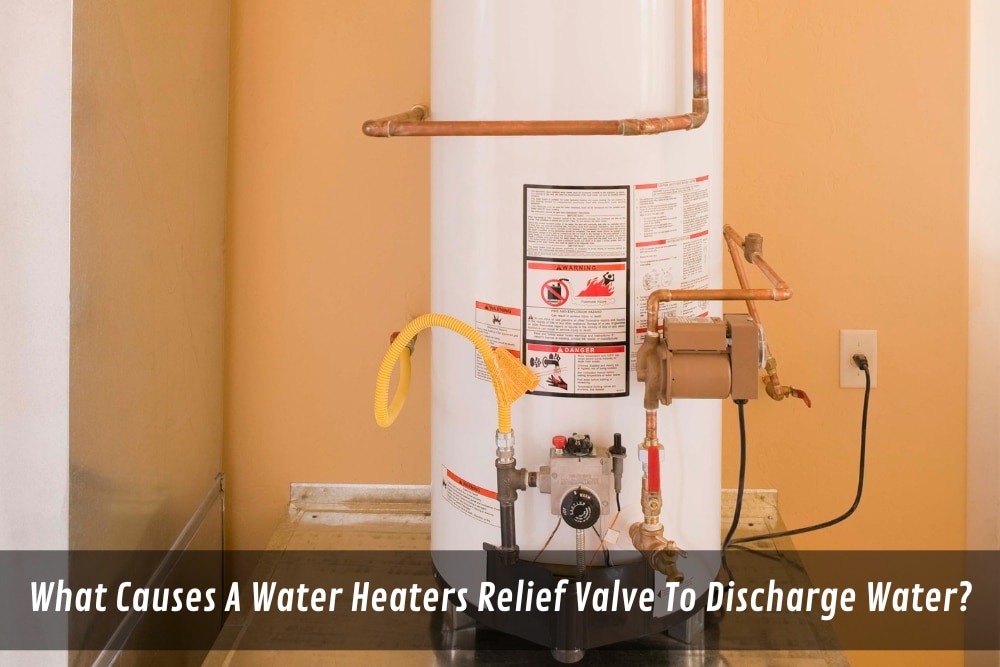The hot water heater relief valve is a critical component of your water heating system. It is responsible for releasing pressure when it builds up to a dangerous level, preventing damage to your water heater and home. However, if you notice water leaking from the relief valve, it could be a sign that something is wrong with your water heater. Neglecting this issue could lead to severe issues and maintenance problems. Therefore, it is crucial to understand the common causes of hot water heater relief valve discharges and how to prevent them. In this blog post, we will explore these causes in detail, offering insights into water heater issues and maintenance that can help you keep your system running smoothly.
What are some common issues to look out for with water heater relief valves?
There are several common issues that homeowners should look out for with water heater relief valves, including:
-
Leaking water
If the relief valve is leaking water, it could indicate that the valve is failing or that the water heater is experiencing too much pressure or temperature.
-
Discharging water
If the relief valve is discharging water, it could indicate that the water heater is experiencing excessive pressure or temperature, or there is a problem with the valve itself.
-
Corrosion or mineral buildup
Over time, minerals and sediment can build up in the water heater tank and cause corrosion or damage to the relief valve.
-
Malfunctioning thermostat
A faulty thermostat can cause the water heater to overheat, resulting in pressure buildup and a relief valve discharge.
-
Faulty heating element
A malfunctioning heating element can cause the water heater to overheat, leading to relief valve discharge or even tank failure.
-
High water pressure
If the water pressure in the home is too high, it can cause the relief valve to discharge water to reduce the pressure.
-
Old age
Relief valves can wear out over time, leading to issues such as leaking or discharging water.
It’s essential to regularly inspect and maintain your water heater to prevent these issues and ensure it functions correctly.
What makes water discharge from relief valves?
- The main causes of water discharge from relief valves are excess pressure and temperature in the water heating system. When the pressure and temperature inside a closed water heater system exceed safe levels, the heater pressure relief valve is designed to release some water to prevent a potential explosion or other critical safety issues. The water is released through a discharge pipe or tube. It should be directed to a safe location to prevent major water damage.
- Other causes can include faulty valves, connections for corrosion, leaks in the relief valve discharge piping, or a defective built-in check valve. The size and diameter of the discharge pipe also need to meet specific NSW plumbing codes, depending on the type of water heater being used.
- In addition, a lack of maintenance or regular inspections can contribute to issues with relief valves. Such as an expansion tank that is not properly installed, or a closed cold water inlet valve that is not functioning correctly. These issues can lead to an increase in pressure or temperature that triggers the relief valve to release water.
What steps can you take to prevent or reduce issues with your water heater’s pressure valve?
Here are some steps you can take to prevent or reduce issues with your water heater’s pressure valve:
-
Check your water supply pressure
Ensure that your water supply pressure is no higher than 80 psi. High water pressure can cause damage to both the water heater and your plumbing system.
-
Install an expansion tank
An expansion tank can help regulate pressure within the water heater tank. It prevents excessive pressure buildup and reduces the risk of water damage or heater damage.
-
Inspect and replace the valve
Regular inspection of heater pressure relief valves is recommended to ensure proper functionality. If water leakage or inadequate opening is observed, replacement may be necessary.
-
Check the temperature and pressure
Regularly check the temperature and pressure of your hot water heater using a pressure gauge. If the pressure is too high or the temperature is too hot, adjust the thermostat accordingly.
-
Inspect the anode rod
The anode rod helps prevent corrosion within the water heater tank. Regularly inspect the anode rod and replace it if it is corroded or worn out.
-
Flush the tank
Sediment buildup within the tank can cause a damaged water heater and reduce efficiency. Regularly flush the tank to remove any sediment and ensure that it is running efficiently.
By taking these steps, you can help prevent water heater failure and reduce the risk of water damage or heater damage caused by pressure issues or leaking water from the pressure relief valve.
In summary, a water heater relief valve discharging water can be a sign of various issues. It includes high water pressure, a malfunctioning thermostat or heating element, corrosion, or mineral buildup. These issues can cause the relief valve to release pressure and prevent further damage to the water heater or the home. Electric water heaters are particularly prone to relief valve discharges. It occurs when the pressure exceeds 150 psi or the temperature goes above 210 degrees. Regular maintenance, such as checking the anode rod and pressure gauge, can prevent issues with water heater pressure relief and ensure your hot water heater functions correctly. It’s essential to promptly address relief valve discharges to prevent water damage and potential heater damage.
Contact Sydney Hot Water Systems today if you need any assistance. We can help you find the right water heater for your home and provide expert advice and installation.


